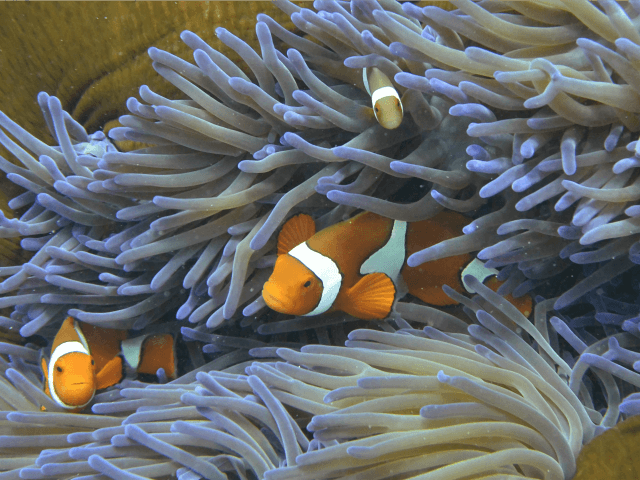The Great Barrier Reef is dead. It has ceased to be, expired and gone to meet its maker, kicked the bucket, shuffled off its mortal coil, run down the curtain and gone to join the bleedin’ choir invisible. It is an Ex Great Barrier Reef.
Well, at least it is if you believe the left-wing media such as the Guardian, which claims today that the reef is at “terminal stage” because of damage allegedly caused by “climate change”.
Lots of eco loons have been rending their garments and throwing their (recyclable, organic, gluten-free) toys out of the pram in horror at this hideous disaster.
I got to see the beauty of the #GreatBarrierReef, my children however won't get to. Australia, stop dragging your feet on #ClimateAction
— Gareth Olver (HOME IS CALLING) (@GBO26) April 10, 2017
But it’s OK. As I keep trying to explain here to anyone who’ll listen – and obviously, also, to annoy the greenies – is that the Great Barrier Reef isn’t in the remotest danger. Yes, it has experienced bleaching, but this is normal – especially in dramatic El Ninos like the one we’ve just had – and there is no reason to suspect that the GBR won’t recover. Nor is there any particular reason to blame man’s-selfishness-and-greed-and-refusal-to-amend-his-lifestyle for the temporary damage the reef has suffered. Even if we’d done as the greenies want and bombed our economies into the dark ages, replaced all cars with bicycles and retired to caves illuminated by tallow candles – even then, the GBR would be in exactly the same condition as it is now because El Ninos are a natural phenomenon not a man-made one.
For chapter and verse on this I recommend this most excellent essay by ecologist Jim Steele, who puts the scaremongering in its proper scientific context.
The problem is that the main man behind the scare – Professor Terry Hughes of an impressive-sounding organisation called the National Coral Bleaching Task Force – appears to have been more interested in generating headlines than pursuing the scientific method.
His scary aerial shots of bleached Great Barrier Reef may look like damning evidence of the effects of climate change on the reef. But here’s the rub:
Aerial surveys, on which Hughes 2017 based their analyses, cannot discriminate between the various causes of bleaching. To determine the cause of coral mortality, careful examination of bleached coral by divers is required to distinguish whether bleached coral were the result of storms, crown-of-thorns attacks, disease, aerial exposure during low tides, or anomalously warmer ocean waters. Crown-of-thorns leave diagnostic gnawing marks, while storms produce anomalous rubble. Furthermore aerial surveys only measure the areal extent of bleaching, but cannot determine the depth to which most bleaching was restricted due to sea level fall. To distinguish bleaching and mortality caused by low tide exposure, divers must measure the extent of tissue mortality and compare it with changes in sea level. For example, the Indonesian researchers found the extent of dead coral tissue was mostly relegated to the upper 15 cm of coral, which correlated with the degree of increased aerial exposure by recent low tides. Unfortunately Hughes et al never carried out, or never reported, such critical measurements.
And no, bleaching isn’t the same as dying. Not in the slightest.
Hughes reported the various proportions of areal bleaching as degrees of severity. But that frightened many in the public who confused bleaching with mortality, leading some misguided souls to blog the GBR was dead. However bleaching without mortality is not a worrisome event no matter how extensive. Rates of mortality and recovery are more important indices of reef health. As discussed in the article “The Coral Bleaching Debate: Is Bleaching the Legacy of a Marvelous Adaptation Mechanism or A Prelude to Extirpation?“, all coral retain greater densities of symbiotic algae (symbionts) in the winter but reduce that density in the summer, which often leads to minor seasonal bleaching episodes that are usually temporary. Under those circumstances coral typically return to normal within weeks or months. Furthermore by ejecting their current symbionts, coral can acquire new symbionts that can promote greater resilience to changing environmental conditions. Although symbiont shifting and shuffling promotes adaptation to shifting ocean temperatures, symbiont shuffling cannot protect against extreme low tide desiccation, and dead desiccated coral can no longer adapt. Humans have little control over El Niños or low tides.
Why does anyone seriously imagine the Great Barrier Reef is dying? For the same reason some idiots seriously imagine that the polar bear is an endangered species. For the same reason these same pillocks think that there’s a man-made climate change problem.
Because Greenies don’t do science. They do propaganda.

COMMENTS
Please let us know if you're having issues with commenting.